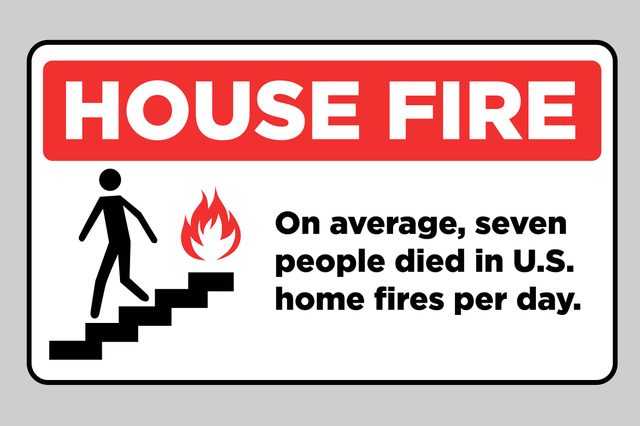
House fires are deadly and all too common
A house fire happens every 86 seconds, and with winter coming, the risk of a house fire in your own home is about to go way up, according to the National Fire Protection Association (NFPA). Here are the NFPA’s sobering statistics of U.S. home fires between 2011 and 2015:
- Fire departments in the US responded to an estimated average of 358,500 home structure fires per year, resulting in:
- 2,510 civilian deaths, or 93 percent of all civilian fire deaths
- 12,300 civilian fire injuries, or 87 percent of all civilian fire injuries
- $6.7 billion in direct damage
- On average, seven people die in U.S. home fires per day.
- Cooking equipment was the leading cause of home fires. Heating equipment came in second.
- Smoking was the leading cause of civilian home fire death.
- Home fires spread so rapidly that by the time a fire alarm sounds, there may be as little as two minutes for a family to escape a house fire.
- Although the sheer number of deaths from home fires has decreased, the rate of death per house fire is up by 10 percent since 1980, indicating that more progress has been made in preventing home fires than in preventing deaths as a result of a home fire.
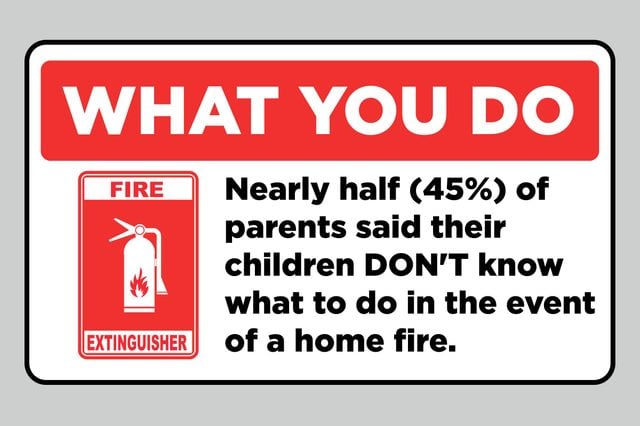
What you’re doing about it (hint: not enough)
Since 1925, the U.S. has observed National Fire Prevention Week every year during the week in which October 9 falls—October 9 being the most horrific day in U.S. fire history as a result of the Great Chicago Fire of 1871, which killed more than 25 people, left 100,000 homeless, destroyed more than 17,400 structures, and burned more than 2,000 acres. Nevertheless, and notwithstanding all those scary statistics we just listed, a recent survey by Nationwide Insurance of 1,001 parents or guardians of children ages up to 12 years old found that:
- A mere 47 percent of homes have a fire-escape plan in place. The rest basically have no idea what to do in the event of a home fire.
- Less than 38 percent of those who have a fire-escape plan in place have actually practiced their escape plan in the last year
- A mere one in every five families EVER practice fire escape plans at home
- Nearly half (45 percent) of parents said their children DON’T know what to do in the event of a home fire
- Three out of four parents didn’t feel there was any particular reason to worry about their children being in a house fire.
This is why Nationwide has declared October 14 as Home Fire Drill Day as part of their Make Safe Happen program. “You do fire drills at school. You do them at work. Now do them at home,” Nationwide urges. And with the help of their program, which we outline below, you’re going to be able to create your own fire drill checklist, teach it to your children and get into the routine of practicing it twice per year.
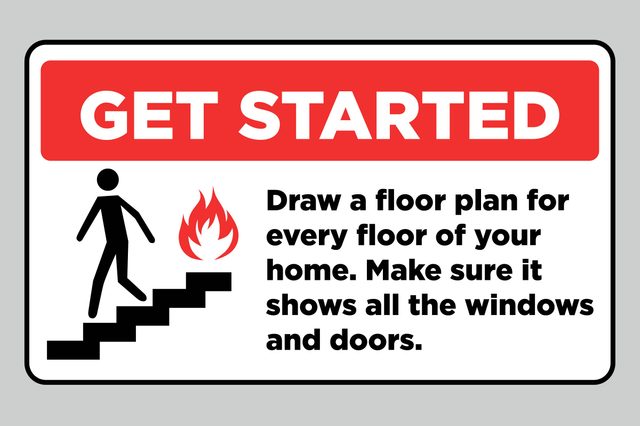
Get started by drawing a floor plan
Nationwide suggests beginning your fire safety plan by drawing a floor plan for every floor of your home, including the basement. Make sure it shows all the windows and doors. Then for every room, indicate two ways out and label them. Get started by downloading this escape-plan worksheet.
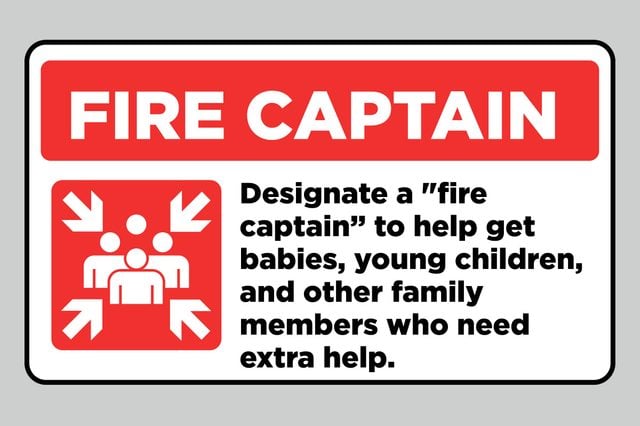
Designate a “fire captain”
As the architect of your fire-escape plan, you should designate one adult to help get babies, young children, and other family members who need extra help out safely. You should also have a designated substitute in case the primary person is not home or is overcome by smoke. Everyone in the house should be aware of who the fire captain is. Also, make sure to watch out for these hidden items that can be a fire hazard in your home.
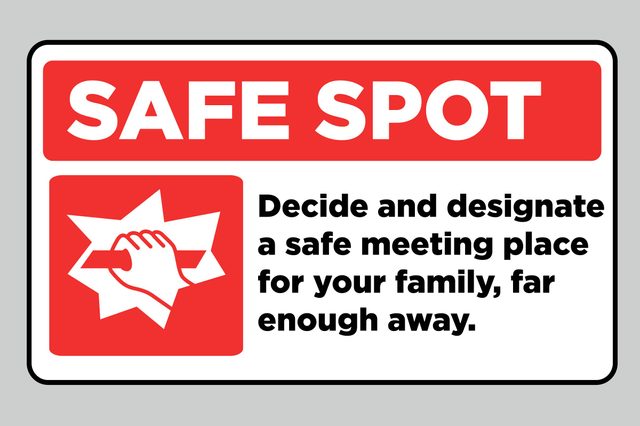
Plan your safe spot
Decide and designate a safe meeting place for your family, far enough away from your home’s structure to be safe from debris but close enough that everyone can meet there quickly.
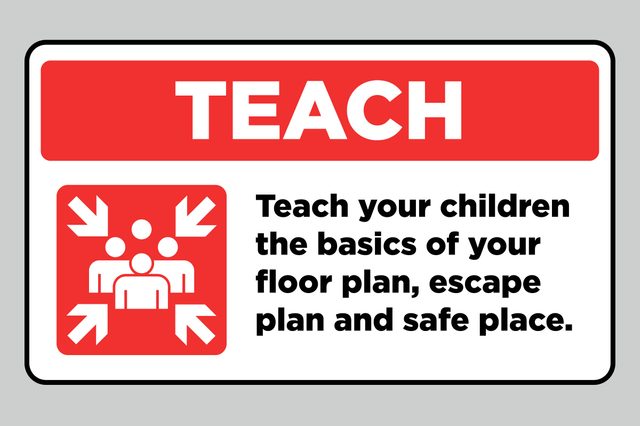
Teach your children
Once you’ve come up with the basics of your floor plan, escape plan and safe place, it’s time to share the plan with your children:
- Show each child his or her own personal escape plan, and the safe spot. Explain that contrary to anything else they may have heard about calling 911, no one should call 911 until they are safely out of the house and in the safe spot.
- Inform your children of who the fire captain is and what the fire captain’s role will be, but not to wait for the fire captain before making their escape.
- Make sure your children recognize the sound of your smoke alarm and explain that if they hear the sound, they need to put their plan of escape into action and meet at the safe spot.
- Teach your children that when escaping, they are to get low and crawl on the ground, where the air is less smoky.
- Teach your children to test doors for heat with the backs of their hands before opening. Teach them an alternate escape route if a door is hot to the touch.
- Teach your children that if they do catch fire, they need to stop, drop, and roll.
- Have an escape ladder for each child, show each child where it is and how to use it.
- Teach children to never hide from firefighters.
- Teach children to never go back inside a burning building. Once they are out, stay out!
- Quiz your children to make sure they understand all of the above
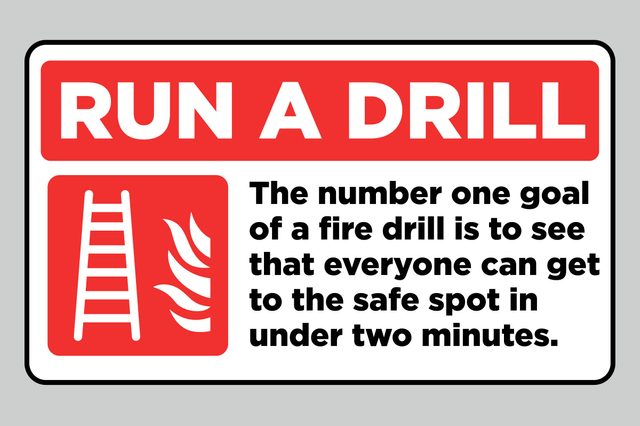
Run a drill
Once you’ve taught your kids what they need to know, it’s time to run a drill. The number one goal of a fire drill is to see that everyone can get to the safe spot in under two minutes. During the drill:
- Have the kids head to their bedrooms and wait for the drill to begin. Or begin the drill from a common area, like the TV room or play room.
- Put one adult in charge of sounding the smoke alarm and running the drill.
- Sound the smoke alarm, start the timer and have everyone book it to the safety spot.
- Once everyone gets to the safety spot, stop the timer. If you all made it in under two minutes, you’ve succeeded in the drill. If not, repeat until you can get it finished in under two minutes.
- In a real life fire situation, after everyone has reached the safety spot, call 911 and keep everyone close until firefighters arrive.
Here is an example of what a fire drill should look like.
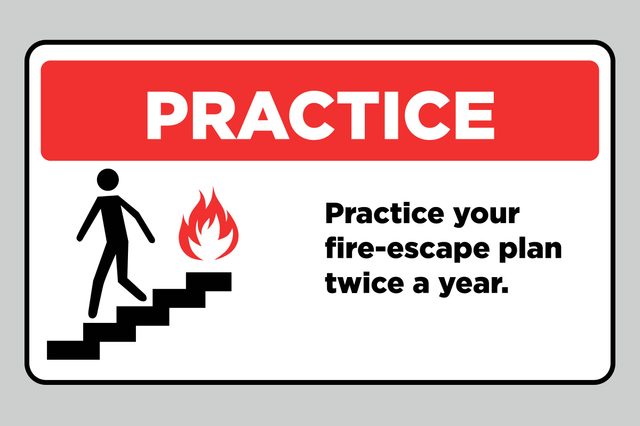
Practice, practice
Practice your fire-escape plan twice a year. Nationwide suggests making a game out of it to keep the kids motivated and interested. For example, have prizes in mind, such as “If you can get to the safe spot in under two minutes, then we have breakfast for dinner. Under one minute? Ice cream for dessert!” Since fires can start anywhere in the home and at any time, run through the plan at different times of the day or night, and practice different ways out. For nighttime drills, motivate the kids with promises of ghost stories and hot chocolate.
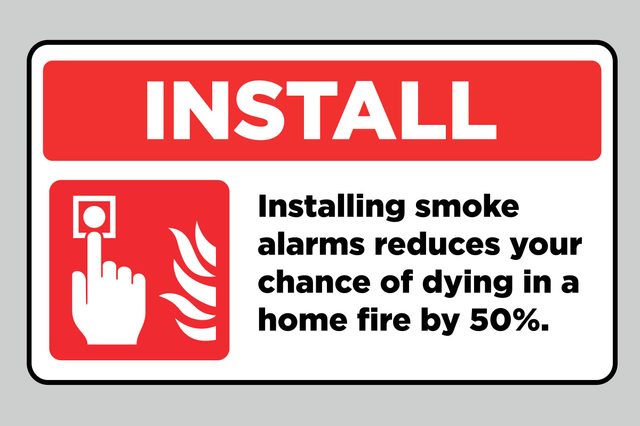
Install smoke alarms
Working smoke alarms reduce your chance of dying in a home fire by 50 percent, according to the Center for Injury Research and Policy at Nationwide Children’s Hospital. Nationwide recommends that you should have a smoke alarm on every level of your home, including the basement. In addition, there should be a smoke alarm in each bedroom/sleeping area. Where to place smoke alarms? High up on the walls or on the ceiling, because smoke rises. If you’re ceiling mounting your alarm, then place the alarm at least four inches away from the nearest wall. If you’re wall-mounting, then aim for four to 12 inches from the ceiling. For the sake of fire safety, please think twice about charging your phone in your bed.
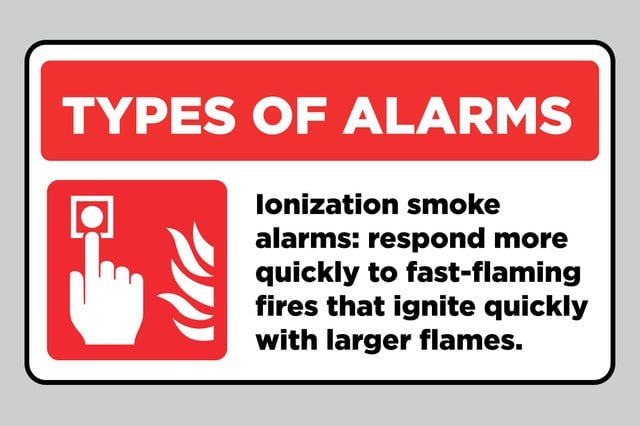
Types of smoke alarms
The U.S. Fire Administration recommends having more than one of these types of smoke alarm installed in your home: Photoelectric smoke alarms: these respond faster to slow-burning fires that tend to smolder and produce large amounts of smoke (i.e., fires caused by cigarettes, fireplace embers and electrical shorts). Ionization smoke alarms: these respond more quickly to fast-flaming fires that ignite quickly with larger flames, but produce less smoke (i.e., fires caused by gasoline or other flammable liquids, newspapers, cleaning products and cooking grease). In addition, if someone who lives in your home is deaf or hard of hearing, buy alarms that use light and vibration to signal a fire. And it’s best to install alarms that are connected to one another, either by wire or by wireless signal, so when one alarm sounds, the others do, too.
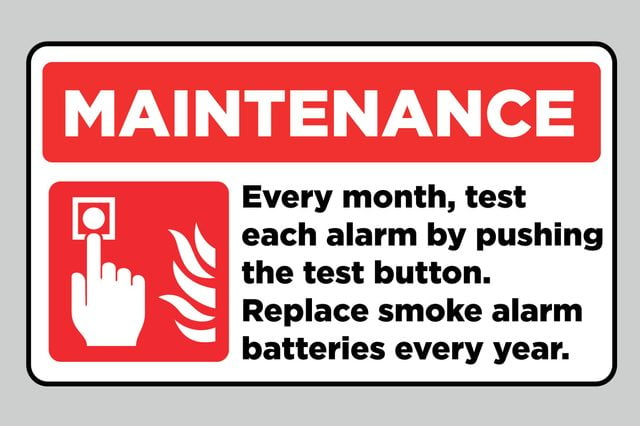
Maintain your smoke alarms
Your smoke alarms are only good if they work. So every month, test each alarm by pushing the test button. Replace smoke alarm batteries every year, and replace each smoke alarm in its entirety every 10 years, or whenever the manufacturer recommends. You can keep your smoke alarms clean and in their optimal working order by vacuuming them. Here are some other clever ways to use your vacuum cleaner.
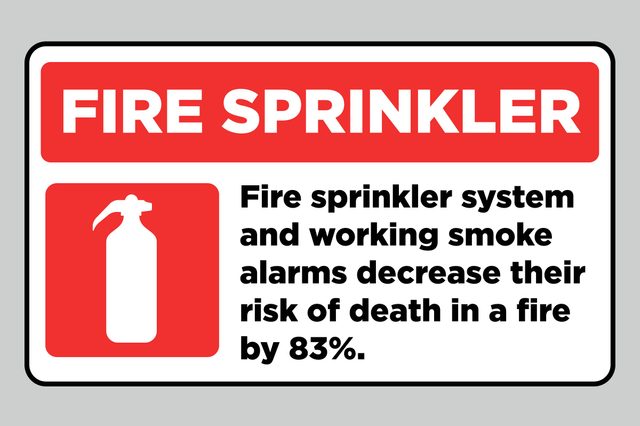
Consider a fire sprinkler system
Nationwide informed Reader’s Digest that families with a fire sprinkler system and working smoke alarms decrease their risk of death in a fire by 83 percent when compared to families with neither. Fire sprinklers are activated by heat, not smoke (so smoke alarms are still very important). This way, only sprinklers near the fire will go off. If you are buying a new home or even just renovating, please consider adding a fire sprinkler system, and when doing so, be sure to use a trained contractor who will follow National Fire Protection Association codes and standards to install your system. Here are 11 secrets that home contractors would like you to know before you buy a new home.
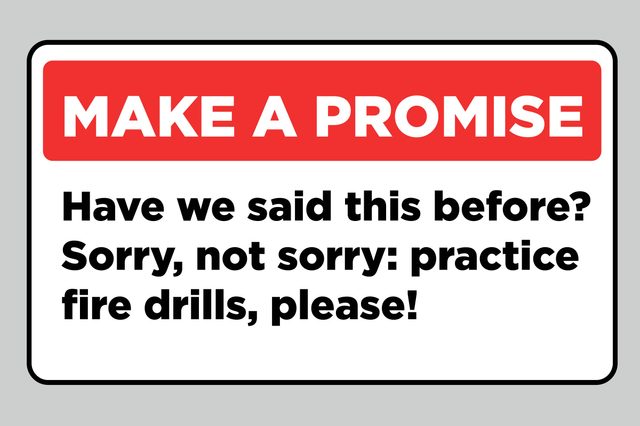
Make a promise
Have we said this before? Sorry, not sorry: practice fire drills, please. And while you’re at it, make your promise public by pledging here. And remember, if you take the above precautions and participate in Home Fire Drill Day, you’re putting your family in a much safer position! So, be optimistic, and practice staying optimistic.
